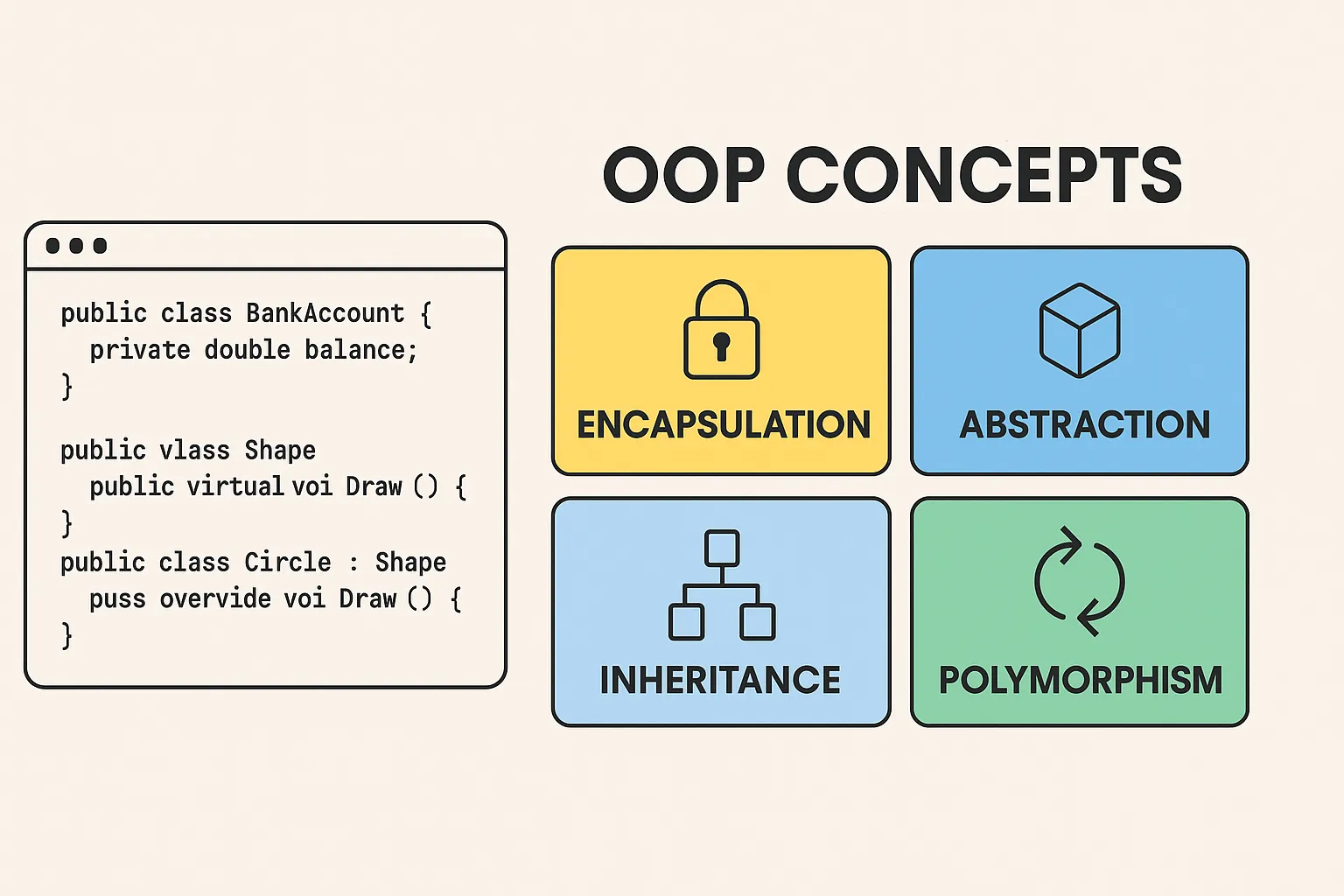Developer 101 – Mastering OOP Concepts: The Blueprint of Modern Programming
What is OOP and Why Should You Care?
OOP (Object-Oriented Programming) is more than just a way to write code — it's a mindset. Whether you're working with C#, Java, Python, or JavaScript, understanding OOP helps you build scalable, maintainable, and reusable applications.
Imagine building with LEGO bricks. Each brick is like an object — self-contained, but able to connect with others. OOP helps you structure software just like that.
🔍 4 Pillars of OOP Explained Simply
1. Encapsulation – "Keep it together"
Bundle data (fields) and behavior (methods) into a single unit — the class. Expose only what’s necessary.
public class BankAccount {
private double balance;
public void Deposit(double amount) {
if (amount > 0) balance += amount;
}
public double GetBalance() {
return balance;
}
}2. Abstraction – "Hide the complexity"
Show only essential features. Hide implementation details.
public abstract class Payment {
public abstract void ProcessPayment();
}
public class CreditCardPayment : Payment {
public override void ProcessPayment() {
Console.WriteLine("Processing credit card...");
}
}3. Inheritance – "Reuse and extend"
Create new classes that reuse behavior from existing ones.
public class Animal {
public void Eat() => Console.WriteLine("Eating...");
}
public class Dog : Animal {
public void Bark() => Console.WriteLine("Barking...");
}4. Polymorphism – "Same action, different forms"
Use the same method name but allow different implementations.
public class Shape {
public virtual void Draw() => Console.WriteLine("Drawing shape");
}
public class Circle : Shape {
public override void Draw() => Console.WriteLine("Drawing circle");
}🧪 More Real-World OOP Examples
public class Vehicle {
public string Brand { get; set; }
public virtual void Start() => Console.WriteLine("Starting vehicle");
}
public class Car : Vehicle {
public override void Start() => Console.WriteLine("Starting car");
}
public class Motorcycle : Vehicle {
public override void Start() => Console.WriteLine("Starting motorcycle");
}🛠️ Why It Matters in the Real World
- Maintainability: Easier to fix bugs and add features.
- Scalability: Components grow independently.
- Reusability: Code once, use everywhere.
- Team Collaboration: Clear structure improves understanding.
⚖️ OOP vs Functional Programming
| Aspect | OOP | Functional Programming |
|---|---|---|
| Core Idea | Model behavior as objects | Model behavior as pure functions |
| Structure | Classes and objects | Functions and data immutability |
| State | Mutable state is common | Prefer stateless functions |
| Example Use Case | UI applications, simulations | Data transformation, analytics, concurrency |
| Reusability | Via inheritance and interfaces | Via higher-order functions and composition |
| Popular Languages | Java, C#, Python, C++ | Haskell, Elixir, F#, JavaScript (can do both) |
| Debugging | Harder with shared state | Easier due to lack of side effects |
✅ Summary
| Pillar | Purpose | Real-world Analogy |
|---|---|---|
| Encapsulation | Hide internal data | ATM machine's PIN entry |
| Abstraction | Simplify interface | Car dashboard controls |
| Inheritance | Reuse logic | Child inherits from parent |
| Polymorphism | Dynamic behavior | A "play" button on multiple apps |
📢 What’s Next?
Now that you've got the basics of OOP down, try spotting these concepts in your existing codebase. Refactor where needed. Trust us — your future self and teammates will thank you.

